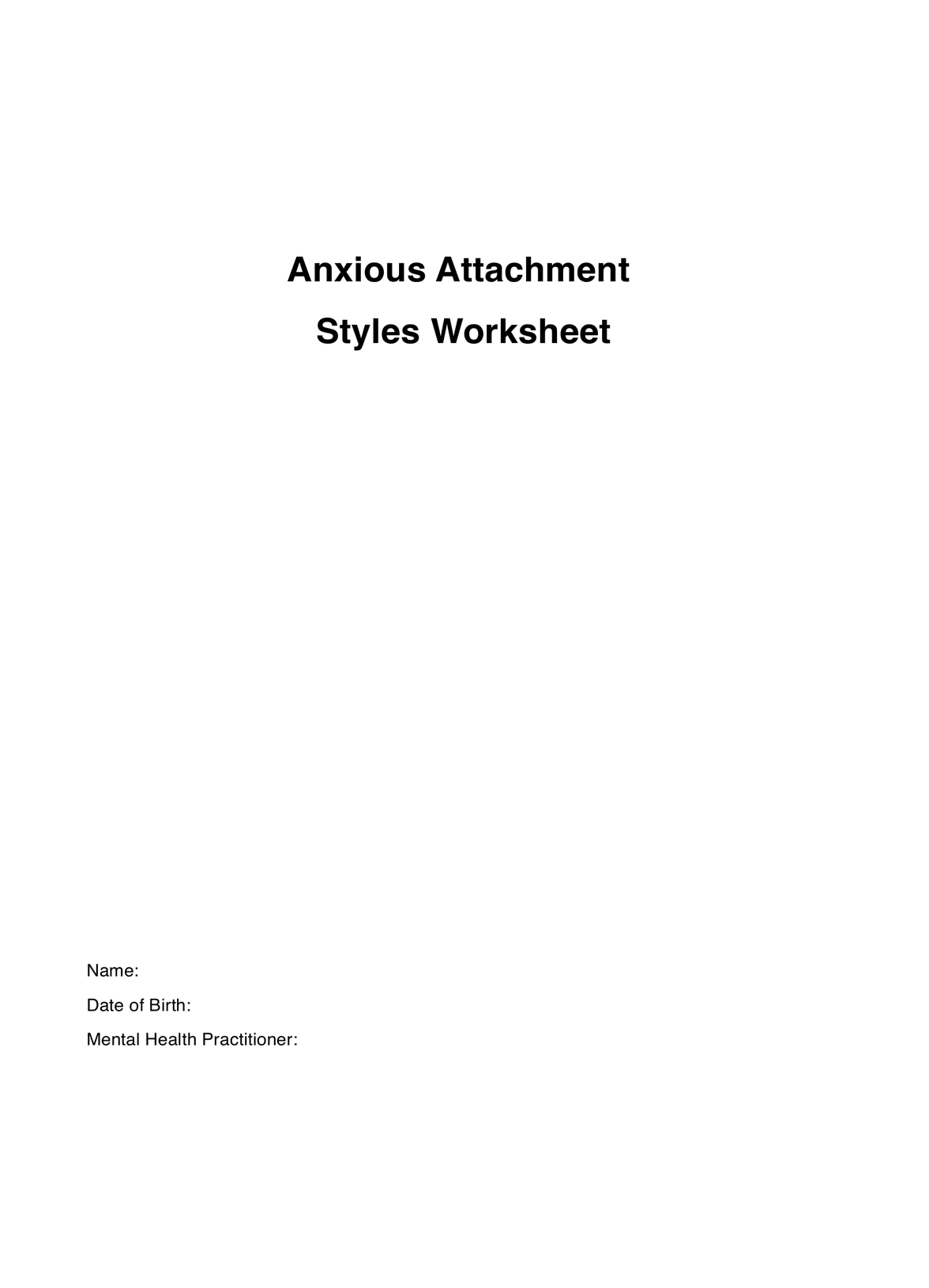The anxious attachment style may be from early childhood experiences such as caregiving. These practices may shape a person's expectations and fears within their future adult relationships.

Anxious Attachment Style Workbook
Click here to learn more about the four different attachment styles and how this workbook can support those with an anxious attachment style.
Use Template
Anxious Attachment Style Workbook Template
Commonly asked questions
A range of symptoms include seeking constant reassurance, fearing abandonment, being overly sensitive to perceived rejection, and clingy behavior.
Yes, through self-awareness, therapy, and a motivated and intentional effort to change these behaviors.
EHR and practice management software
Get started for free
*No credit card required
Free
$0/usd
Unlimited clients
Telehealth
1GB of storage
Client portal text
Automated billing and online payments











